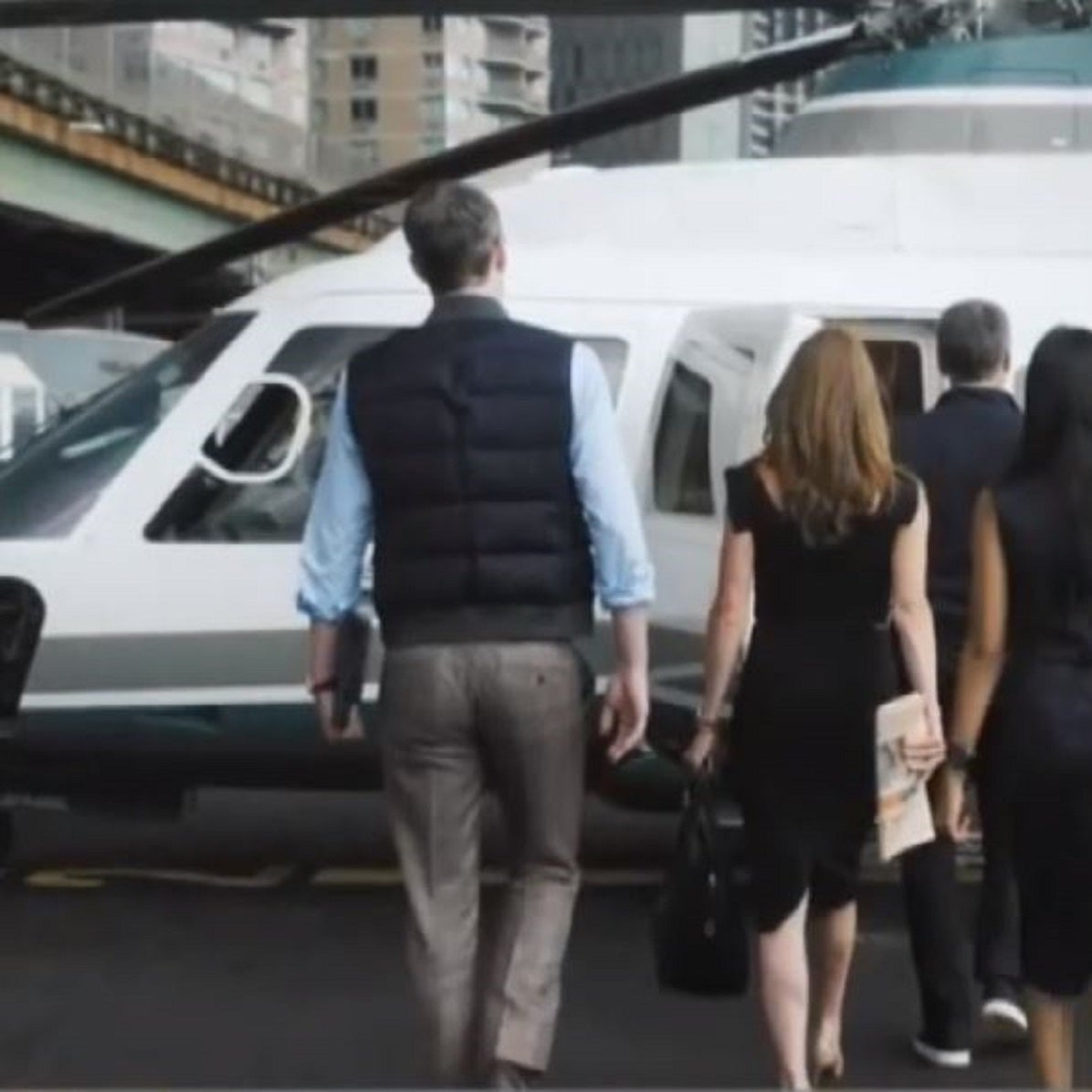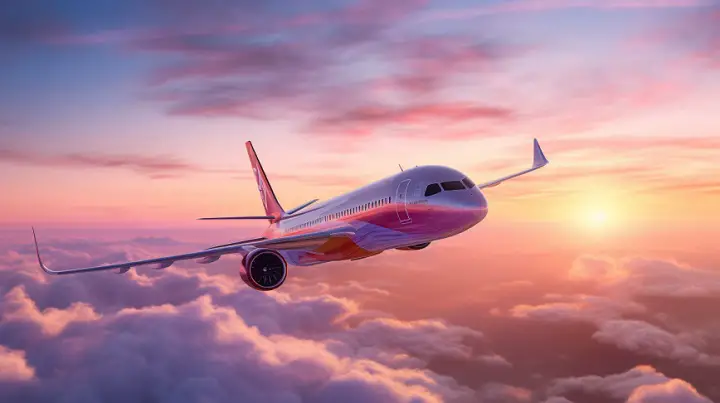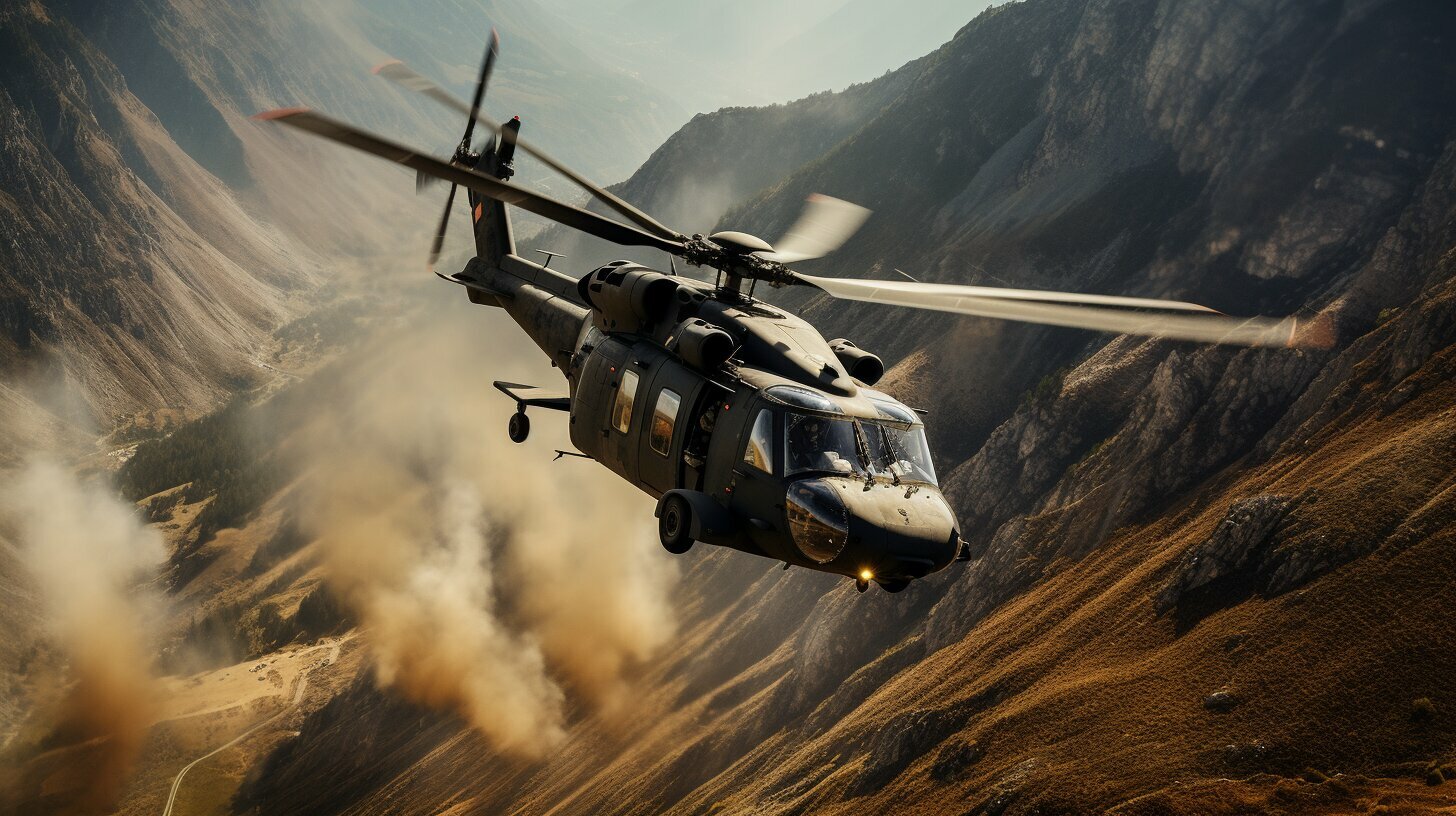
How Helicopters Are Playing a Role in the Air Taxi Concept
The air taxi concept has gained traction in recent years as a potential solution for urban transportation and congestion. While early visions focused on newly designed aircraft, helicopters are now seen as having an important role to play in the development and adoption of air taxis. Here is an in-depth look at how helicopters are involved in this emerging industry.
The promise and challenges of air taxis
The basic promise of air taxis is to enable regular people to hail small aircraft, especially in urban areas, for relatively affordable short-range flights while avoiding traffic on the ground. This could revolutionize transportation and provide numerous benefits:
- Dramatically reduced travel times, especially for longer urban trips
- Avoiding ground congestion and traffic jams
- Potentially minimizing infrastructure costs compared to roads or rail
- Providing access to areas unserved by ground transportation
However, there are also substantial challenges involved in turning the vision into reality:
- Achieving low enough costs for the service to be viable
- Developing a network of vertiports for takeoff and landing
- Ensuring safety and reliability
- Creating aircraft that are quiet, efficient, and easy to fly
- Integrating air taxis with existing air traffic control systems
- Gaining public acceptance and regulatory approvals
Why helicopters are well-suited for early air taxi services
While much of the air taxi promise relies on new aircraft designs yet to emerge, helicopters are already playing an important transitional role in testing and demonstrating the air taxi concept. Here are some key reasons why helicopters are well-suited for these early stage services:
Helicopters are already ubiquitous
There are over 10,000 civilian helicopters registered in the United States alone, primarily used for commercial activities like tourism, corporate travel, air ambulance services, news reporting and more. This existing fleet could be leveraged for initial air taxi services.
Operational experience and infrastructure exists
Decades of experience in helicopter operations, maintenance, pilot training and safety procedures can be drawn upon. Infrastructure like helipads also provides an initial network of vertiports to build from.
Helicopter travel is already established
The public is familiar with helicopter travel and tours, especially in major cities, providing a base of acceptance to build upon. Short helicopter flights are seen as more mainstream than new types of aircraft.
Higher cruising speeds than other VTOL aircraft
Helicopters already achieve cruising speeds of 150 mph or more, allowing them to travel fairly long urban distances within reasonable times. Many proposed new VTOL aircraft have lower expected speeds.
No need to develop radical new technologies
Helicopters rely on proven aerodynamic principles and power systems. This avoids the tech risk and long development times associated with advanced new electric and hybrid-electric propulsion concepts required by many PAV designs.
Lower development and production costs
With helicopters already in mass production, utilizing them for air taxi services avoids the high costs and lead times needed to engineer and produce completely new aircraft models.
Regulatory approval process is established
Bringing entirely new aircraft to market involves extensive design approvals and safety certifications. Helicopters benefit from existing well-defined regulatory and oversight frameworks.
Early air taxi trials using helicopters
Given their advantages, it’s not surprising that helicopters are being utilized for some of the first real-world tests of the air taxi model. A few examples:
Uber Elevate (multiple locations)
The rideshare company Uber has been one of the most visible players trying to demonstrate the viability of air taxis, through its Uber Elevate program. It originally showcased eVTOL (electric vertical takeoff and landing) aircraft prototypes, but shifted to using conventional helicopters for actual flight tests.
In 2020, it operated a short-lived pilot in New York City providing flights between Lower Manhattan and JFK Airport. It currently offers a similar service in Sao Paulo, Brazil. Uber intends these demonstrations to prove out the operational aspects like booking, vertiports and integration with ground transport.
Blade Urban Air Mobility (New York, USA)
Blade has been offering a growing number of helicopter commuter routes and airport transfer services in and around New York City as an initial step toward a wider air taxi network. In 2021, they partnered with Beta Technologies to begin testing eVTOL aircraft. But Blade currently transports over 1,000 passengers daily using traditional helicopters to over 200 vertiports in the region.
Volocopter (multiple cities)
The German eVTOL aircraft startup Volocopter has flown public test flights in a number of cities globally to demonstrate the technology, including Helsinki, Stuttgart, Dubai, and Singapore. However, the company is also operating conventional helicopter services under their VoloIQ brand to help make the business case for air taxi infrastructure.
Skyports/Hyundai (UK)
Skyports, a vertiport infrastructure developer, and automaker Hyundai teamed up in the UK to conduct helicopter test flights moving passengers between vertiports. These flights help provide data to design vertiports suited for new eVTOL aircraft expected to come later.
Airbus CityAirbus (multiple cities)
Aerospace giant Airbus is developing the electric CityAirbus aircraft specifically for urban air mobility. But in the meantime, Airbus has been operating helicopter flight trials in various cities to prepare the way for certification and adoption of their new model.
Helicopter capabilities being expanded for air taxis
While production helicopters already make a useful interim platform, some of their characteristics require improvement for broader air taxi applications. This includes extending range, increasing safety, reducing noise, and improving operational efficiency.
Helicopter manufacturers, operators and startups are investing in upgrades and modifications to make helicopters better serve this new role:
- Range extensions – Tanks with extra fuel capacity let helicopters make longer flights between vertiports without refueling. Advanced batteries provide supplemental electric power. External modifications like winglets improve aerodynamics.
- Avionics upgrades – Digital flight controls, satellite-based navigation, enhanced instrumentation, and autonomous control systems make helicopters easier to operate and safer in busy urban airspace.
- Noise reduction – New rotor blade shapes and materials, quieter engine intakes/exhausts, and improved vibration damping lower noise levels for residents.
- Pilot assist features – Automation aids like auto-takeoff and landing, obstacle detection, and traffic avoidance reduce pilot workload and enhance safety.
- Operational streamlining – Centralized booking systems, passenger and cargo loading equipment, fleet management software and other tools make air taxi helicopter services more efficient.
- Future propulsion – Companies are starting to test hybrid/electric helicopters to prepare the transition away from conventional engines in line with future PAV designs.
By combining incremental improvements from these areas, today’s helicopters can better fill the early air taxi role while still taking advantage of their fundamental strengths.
Challenges for helicopters as long-term air taxi aircraft
While helicopters are useful for pioneering air taxi systems, they face some inherent limitations that are driving the push toward developing brand new PAV aircraft designs optimized for this application:
- Energy efficiency – Helicopters burn more fuel per passenger mile than many emerging eVTOL and other concepts promise to achieve. Operating costs stay high.
- Cruising speed – The maximum speed of helicopters may not be enough for longer urban routes or high throughput. eVTOL models target over 200 mph.
- Operating complexity – Piloting helicopters requires extensive skill and training. Full automation and optional manual control could make future PAVs accessible to more operators.
- Safety record – Helicopters have more mechanical complexity and lower redundancy than multi-rotor eVTOL designs resulting in higher accident rates per flight hour.
- Ride comfort – The vibration and noise levels in helicopters makes for a rougher ride than the promised smooth, quiet passenger experience inside cabins of new PAVs.
- Aircraft scale – Larger helicopters carrying 4-6 people may be inefficient for some routes. eVTOL aircraft promise personal or small group transport.
So while they serve an important transitional purpose, helicopters are not expected to be the long-term vehicle of choice for high-volume urban air taxi networks. But their unique capabilities support getting systems off the ground today.
Sample helicopter models used in air taxi testing
Many different helicopter models have been used in early air taxi trials or proposed for such services. Here are examples of some notable ones:
Robinson R44
- 4 seats
- Cruising speed: 140 mph
- Range: 340 miles
- Very popular, low-cost civilian helicopter (~$500k)
- Used by Blade and Uber in air taxi demos
Bell 206
- 4-5 seats
- Cruising speed: 140 mph
- Range: 360 miles
- Proven, versatile light helicopter design (+50 year history)
- Used by Volocopter’s VoloIQ service
Airbus H120 (aka Eurocopter EC120)
- 4 seats
- Cruising speed: 144 mph
- Range: 370 miles
- Over 1000 produced. Civilian and commercial use.
- Part of Skyports/Hyundai UK air taxi trial
Leonardo AW109
- 6-7 seats
- Cruising speed: 155 mph
- Range: 420 miles
- Modern light twin-engine helicopter
- Tested by Volocopter’s VoloIQ
Bell 407
- 5 seats
- Cruising speed: 152 mph
- Range: 374 miles
- Used for corporate transport, offshore, EMS
- Tested by NASA for urban air mobility
Airbus H130 (aka Eurocopter EC130)
- 6-8 seats
- Cruising speed: 138 mph
- Range:348 miles
- Quiet, popular for tours and charter
- Used by Uber in initial testing
This range of sizes, capabilities and configurations allows finding the right helicopter model for each air taxi use case and business model.
Regulatory considerations for helicopter air taxis
While pioneering helicopter air taxi services are already operating in various regions, significant expansion faces challenges around regulation and air traffic management:
- Operating certificates – Commercial air taxi services require special FAA approvals in the US, which constrain business models and aircraft options. Regulation differs across countries.
- Airport access – Expanding routes may require negotiating airport access for more vertiports. Airspace rules limit helicopter activity in many urban areas.
- Air traffic control – Safely managing a high volume of air taxi traffic, including autonomous aircraft, requires modernizing ATC systems with digital tools.
- Noise regulation – Many jurisdictions prohibit or restrict helicopter operations based on noise. New standards may be needed for air taxi routes.
- Safety approvals – As autonomy and other advanced capabilities are added to civilian helicopters, extensive testing and certification will be needed for airworthiness.
- Insurance – The uncertainty around risks, liabilities and profitability of air taxi services makes it complex for operators to obtain insurance coverage.
- Public acceptance – Community concerns over helicopter noise, safety and other impacts may create political roadblocks to infrastructure and route approval.
Continued technology demonstrations, operational data-gathering and constructive engagement with regulators will be key to overcoming these hurdles and enabling an expanded role for helicopters in air taxi networks.
Potential future business models using helicopter air taxis
If some of the regulatory and technology challenges can be addressed, there are many promising business models for helicopter air taxi services:
- Inter-airport transport – Transferring passengers between major airports located dozens of miles apart in metropolitan regions.
- Commuter routes – Connecting residential suburbs with urban business districts for daily commuting.
- Tourism – Air taxi services bringing tourists to multiple sites in a city or region, maximizing sightseeing.
- Medical transport – Moving patients from remote areas or smaller hospitals into major medical centers.
- Package delivery – Courier networks using helicopters to transport urgent small packages and medical supplies through congested metro areas.
- Emergency services – Law enforcement, traffic monitoring, disaster response and medical evacuation from highway incidents.
- Offshore transport – Direct helicopter flights to islands, oil rigs and remote coastal sites from onshore vertiports.
- Corporate campus networks – Connecting headquarters, offices, factories and other facilities spread across a metro region.
Helicopters’ unique capabilities in range, speed and landing flexibility make them suited for a variety of specialized air taxi roles over the long term.
Key advantages helicopters retain as part of broader air taxi ecosystem
Even as more advanced new aircraft models emerge, helicopters are likely to continue playing an important role within multi-modal urban air mobility networks due to fundamental strengths:
- Ability to access confined landing areas – Helicopters don’t require space-constrained urban areas to build large vertiports. They can touch down in smaller sites.
- Point-to-point routing – Their ability to fly direct routes overcomes the limitation of vehicles that need fixed routes between vertiports.
- Proven safety record for overwater flights – Overwater operations may remain an advantage compared to some eVTOL aircraft.
- Higher cruise speeds than eVTOL – Helicopters can more efficiently serve certain longer distance routes between regions.
- All-weather capability – Helicopters can operate in rain, snow and wind conditions that could ground other vehicles.
- Long flight range – The ability to fly routes of 100 miles or more without refueling expands the service area.
- Established maintenance infrastructure – No matter how advanced new vehicles get, helicopters will still benefit from an extensive global supply chain and maintenance network.
So while the promise of air taxis relies heavily on new technologies, the unique practicality of conventional helicopters means they are likely to play an ongoing role as part of an integrated, multi-modal air transportation ecosystem.
Frequently Asked Questions
How much does it cost to take a helicopter air taxi trip?
Current helicopter air taxi flights on limited routes range from about $100 to $300 per person per trip, depending on distance. Prices would need to drop significantly, likely to $50 or less per ride, for the service to be affordable for everyday commuting.
How safe are helicopter air taxis?
Helicopters have a higher accident rate than airlines but are still considered acceptably safe for commercial use. Upgraded avionics, automated aids, and improved training can enhance safety further. eVTOL aircraft promise even greater levels of redundancy and automated safety.
Are helicopter air taxis a passing fad or a real possibility?
While it may take a decade or more for full air taxi networks to mature, helicopter demonstrations prove the basic concept has merit. Gradual adoption seems highly likely in certain roles, though helicopters may transition over time to more advanced vehicles.
Do helicopter air taxis require a pilot? Or can they fly autonomously?
Today’s services use professional pilots, but automation and, eventually, full autonomy are critical for air taxis scaling affordably. NASA and industry are actively developing and testing self-flying systems.
Will helicopter noise make residential areas unsuitable for vertiports?
Noise pollution poses a challenge, but improvements in acoustic engineering along with hybrid/electric propulsion are reducing both noise levels and public objections. Strict operating hours and route planning can also mitigate disruption.
Can existing helipads and heliports serve as vertiports for air taxis?
Limited re-use is possible in some cases, but most experts agree that a new network of specially designed vertiports will be required to enable large-scale air taxi networks with frequent takeoffs and landings.
How does bad weather affect helicopter air taxi operations?
Wind, precipitation and low visibility force shutdowns today. Future on-board systems for instrumentation, stability augmentation and autonomous control could expand operability in poor conditions. But limits may remain.
Will air taxi helicopters be switched to electric or hybrid propulsion?
Many companies are actively exploring hybrid/electric helicopters for reasons of efficiency, lower noise, and reduced emissions. But batteries with enough endurance remain a challenge, so conventional engines dominate near term.
How does helicopter air taxi service compare to using road-based ridesharing services?
Air taxis sacrifice the ubiquitous availability of roadside pick-up/drop-off for much faster point-to-point travel, avoiding both traffic and intermediary stops. Together, they create an integrated mobility solution.






